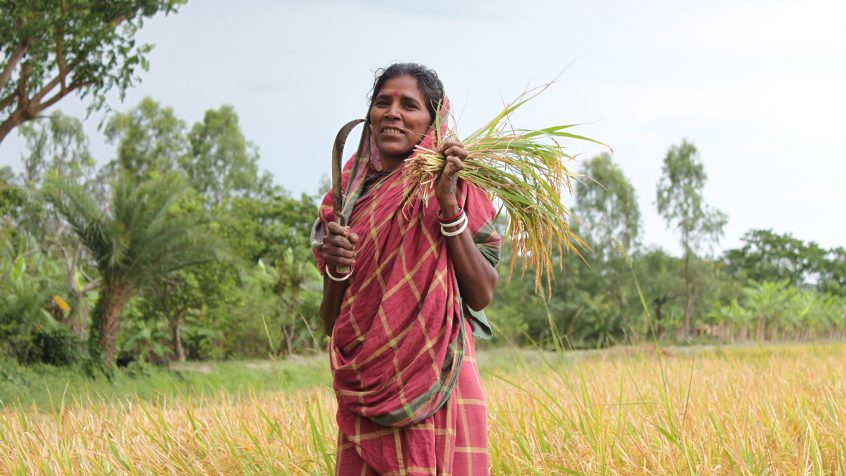
Climate-resilient farming model helps Indian women bounce back after drought
Extended periods of drought are tough on soil and tough on people, particularly women in the Marathwada region of Maharashtra, in India. Between 2012 and 2016, a sustained drought—a weather cycle exacerbated by climate change—resulted in crop failure, groundwater depletion, food insecurity and uncertain cash flow because farmers didn’t have another way of earning a living. Women farmers suffered the worst effects as they also have no land ownership rights, which limits their access to resources like finance, markets, water and government services for getting back on the right track.
To raise the quality of life for women in this part of India, the Swayam Shikshan Prayog (SSP) organization developed a multi-pronged farming approach that positions women as farmers and decision makers. This “women-led climate resilient farming model” (WCRF) repositions women as farmers and knowledge-bearers in their own right, enabling them to take informed decisions related to what crops to grow, what to consume and how much to sell.
The project provides training on key resiliency practices, and other partners provide loans and help facilitate knowledge exchange between farms. This approach builds women’s capacity to practice sustainable agriculture and water conservation to help them ensure enough food and income for their households.
To date, the WCRF model has empowered 41,000 female farmers to be active decision makers and implement climate-resilient practices on their farms. Farmers saw a 25 per cent increase in crop yield because they planted a wider variety of crops, used organic methods of farming, and implemented water and soil-conservation measures. That led to an annual savings of $497 per household.
What is more, the government of Maharashtra has recognized SSP’s model and is now training some of the women farmers to be community facilitators to scale up the WCRF model to benefit the whole region.
What are the inspiring breakthroughs and success stories that illustrate SDG implementation? What are the good practices that can be replicated and scaled up? What are the gaps and constraints and how should we address them? Looking ahead, what steps should we take to accelerate progress? To help answer these and other questions, UN DESA gathered more than 600 good SDG practices in a searchable online database. Be inspired by SDG solutions that work: https://sustainabledevelopment.un.org/partnerships/goodpractices

Follow Us